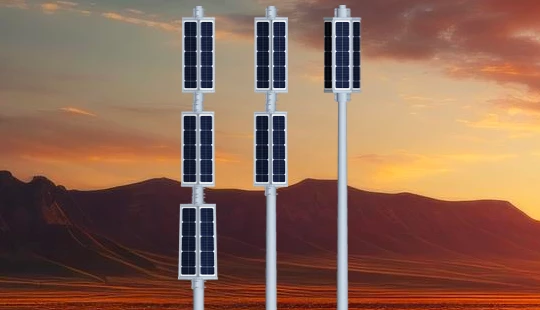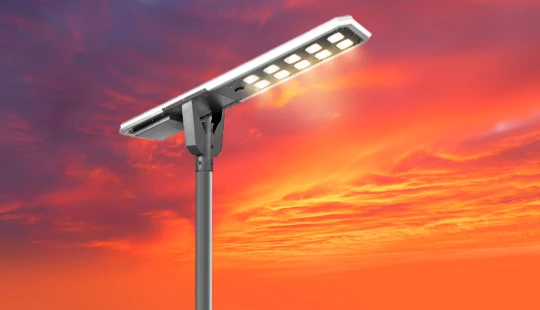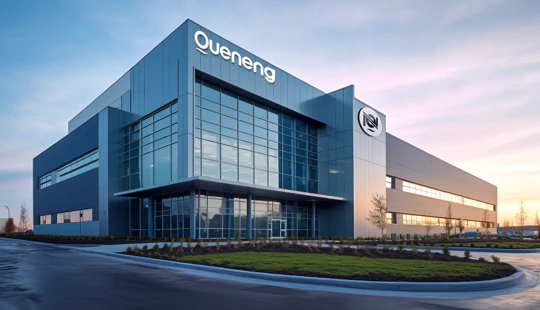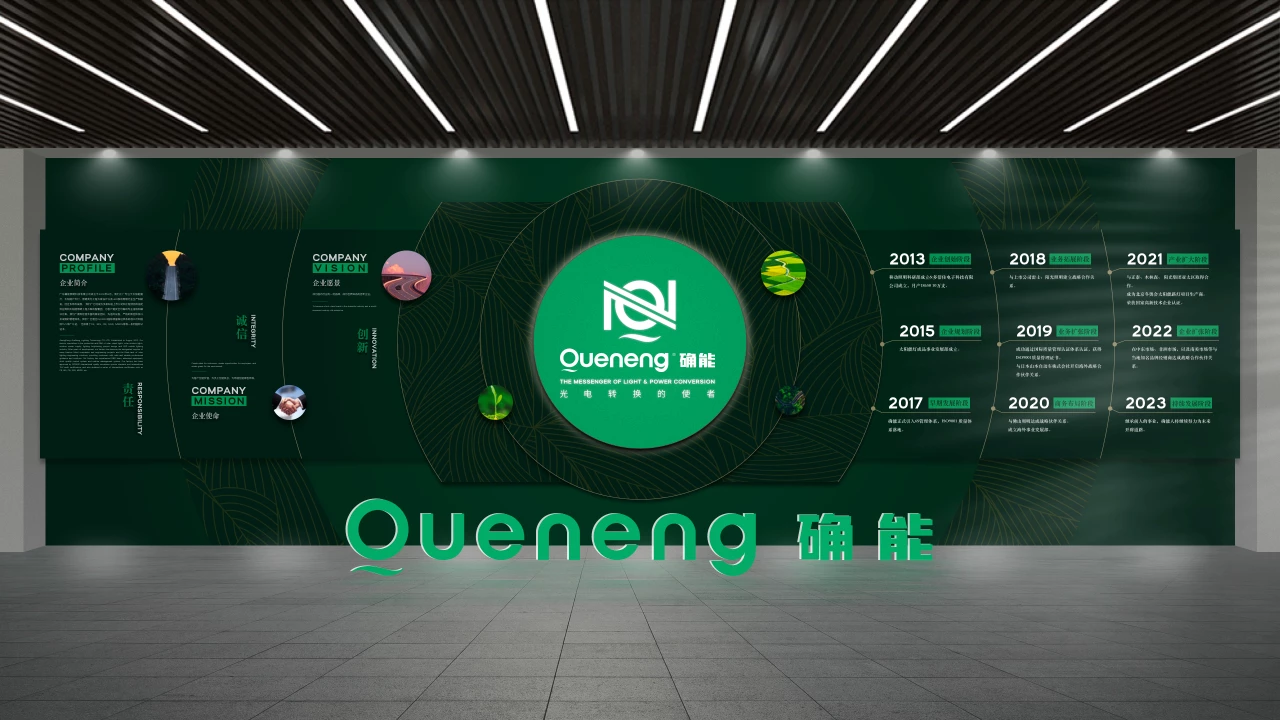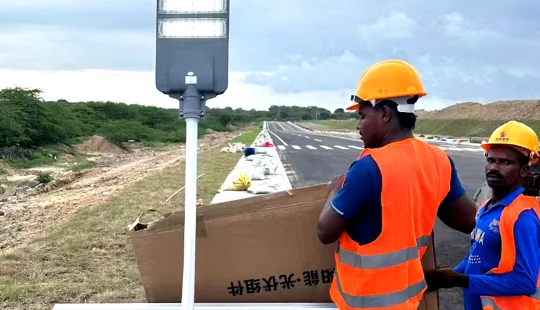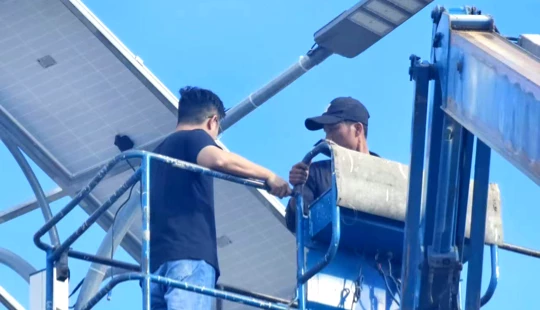how much do solar street lights cost | Queneng Guide
How Much Do Solar Street Lights Cost?
Determining the exact cost of solar street lights is complex, but understanding the factors involved empowers you to make informed decisions. This article clarifies the variables influencing price, allowing you to accurately budget for your next solar street lighting project.
Factors Affecting Solar Street Light Costs
Several key factors significantly impact the overall cost of a solar street lighting system. These include:
* System Capacity (Wattage): Higher wattage LEDs naturally demand larger solar panels and batteries, increasing the initial investment. A 20-watt solar street light will be considerably cheaper than a 100-watt model.
* Battery Capacity (Ah): The battery's capacity dictates how long the lights operate on cloudy days or at night. Larger capacity batteries provide longer autonomy but are more expensive.
* Pole Height and Material: Taller poles require more robust construction materials (e.g., steel vs. aluminum), affecting the overall project cost. The installation complexity also increases with height.
* Number of Lights: Bulk purchasing typically leads to economies of scale, resulting in lower per-unit costs for larger projects.
* Features: Integrated sensors (motion, light), smart control systems, and advanced features enhance functionality but increase expenses.
Component Breakdown of Costs
Understanding the individual costs of each component provides a clearer picture:
* Solar Panel: The size and efficiency of the panel are critical factors. Monocrystalline panels generally offer higher efficiency but command a higher price than polycrystalline options.
* Battery: Lithium-ion batteries offer superior performance and longevity but are pricier than lead-acid alternatives. Life cycle costs should be considered.
* LED Luminaire: The brightness, color temperature, and lifespan of the LED influence the cost. High-lumen LEDs usually cost more but offer better illumination.
* Pole and Installation: Labor costs vary depending on location and project complexity. Site preparation and groundwork are crucial considerations.
Typical Cost Ranges
While precise pricing is project-specific, here are typical ranges for solar street lights:
* Basic Systems: $200-$500 per unit (low wattage, shorter poles, basic features)
* Mid-Range Systems: $500-$1500 per unit (moderate wattage, standard features)
* High-End Systems: $1500+ per unit (high wattage, advanced features, smart control)
Remember that obtaining multiple quotes from reputable suppliers is crucial for accurate cost comparisons. Factor in long-term maintenance and potential replacement costs when planning your budget. Proper planning and understanding these factors will enable you to effectively manage your solar street lighting projects.

Have more questions about our products or services?
The latest hot news you might like

Discover how solar panels power street lights, exploring the technology behind solar energy conversion, storage systems, and how solar-powered street lights are revolutionizing urban and rural lighting solutions.

Learn how AC Solar Hybrid Street Lights work, their advantages, disadvantages, system behavior in low-sunlight conditions, and why hybrid technology is ideal for regions with unstable sunlight.

Municipalities around the world are increasingly adopting solar-powered streetlights as part of their urban development strategies. Rising energy costs, the need for sustainable infrastructure, and government green initiatives are driving cities to switch from traditional street lighting to advanced LED solar streetlights.
Queneng Lighting provides municipalities with cost-effective, energy-efficient, and durable solar lighting solutions, ensuring safe and sustainable public spaces.
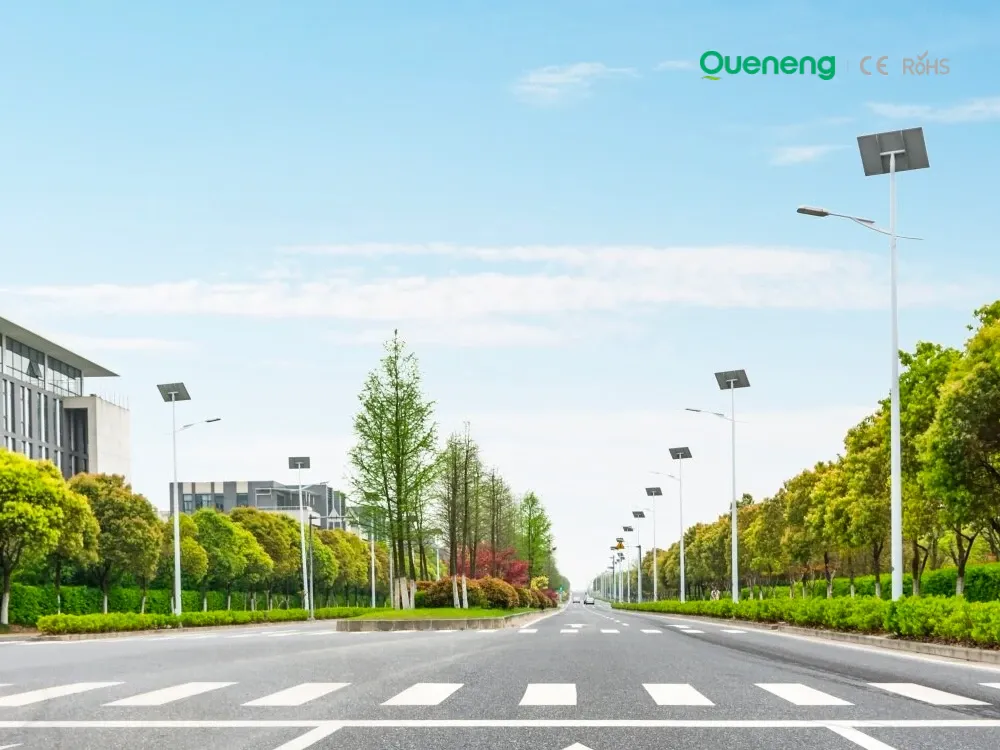
In recent years, the purchase of solar streetlights for municipalities has become a growing trend across the globe. Local governments are under pressure to reduce public expenditure, promote green energy, and create safer communities. Solar streetlights provide a reliable, cost-effective, and sustainable solution that meets these needs. Queneng Lighting, as a leading solar street lighting manufacturer, has supported multiple municipal projects worldwide with customized and energy-efficient solutions.
FAQ
Battery Types and Applications
What devices are best used with rechargeable batteries?
Battery fundamentals and basic terms
What are the main structural components of a lithium-ion battery?
Public Gardens and Landscape Lighting
What happens if the solar light is not working properly?
If your solar light is not working properly, it could be due to a variety of reasons, such as dirt on the solar panel, insufficient sunlight, or battery issues. We recommend cleaning the panel and ensuring it receives enough sunlight. If the problem persists, please contact our customer service team for troubleshooting assistance.
Solar Street Light Lufeng
What makes Lufeng solar street lights eco-friendly?
Lufeng solar street lights are eco-friendly because they use renewable solar energy to power the LEDs, eliminating the need for electricity from the grid. This reduces carbon emissions and dependence on fossil fuels, contributing to a greener, more sustainable environment.
Battery and Analysis
What is an external short circuit and what effect does it have on battery performance?
Battery Performance and Testing
What are the battery safety test items?
2) Overcharge and over-discharge test
3) Withstand voltage test
4) Impact test
5) Vibration test
6) Heating test
7) Fire test
9) Temperature changing cycle test
10) Trickle charging test
11) Free drop test
12) Low pressure test
13) Forced discharge test
15) Electric hot plate test
17) Thermal shock test
19) Needle prick test
20) Extrusion test
21) Heavy object impact test


Queneng's Luzhou Solar Street Light provides sustainable, energy-efficient outdoor LED lighting. Powered by solar energy, it's a cost-effective and eco-friendly solution for illuminating streets and pathways. A reliable and durable LED solar street light.

Queneng’s Solar Street Lights are designed to provide reliable, energy-efficient lighting for streets, parks, and other outdoor spaces.

Experience reliable outdoor illumination with our smart solar street light, a perfect combination of advanced technology and eco-conscious design.

Queneng's Luqiu Innovative Solar Street Light offers energy-saving, durable outdoor lighting. This solar power street light provides a reliable and eco-friendly solution for illuminating your streets and pathways.

Queneng's Luxian Reliable Solar Street Light offers energy-saving LED lighting for outdoor use. This durable, solar-powered street light provides reliable illumination, reducing energy costs and environmental impact. A perfect solution for sustainable outdoor lighting.
If you would like more information about Queneng solar lighting solutions, please send us a message by filling out the form below. Our professional team will get back to you within 24 hours!
Rest assured that your privacy is important to us, and all information provided will be handled with the utmost confidentiality.
Schedule a Meeting

Book a date and time that is convenient for you and conduct the session in advance.
Have more questions about our products or services?

